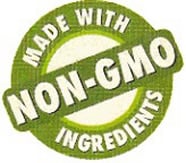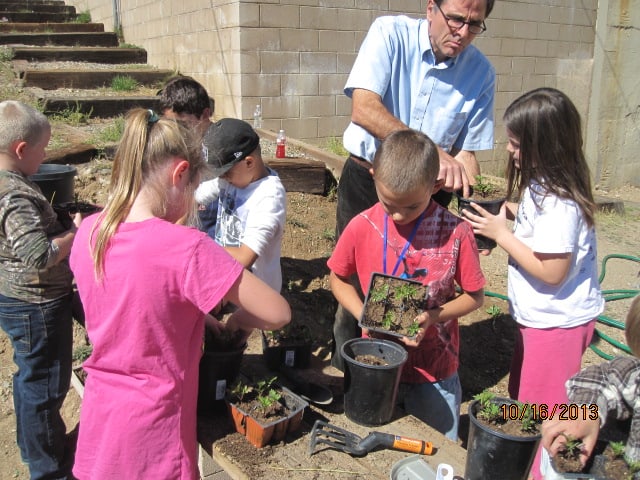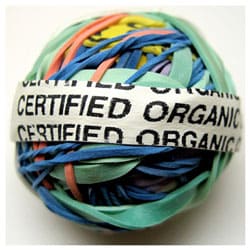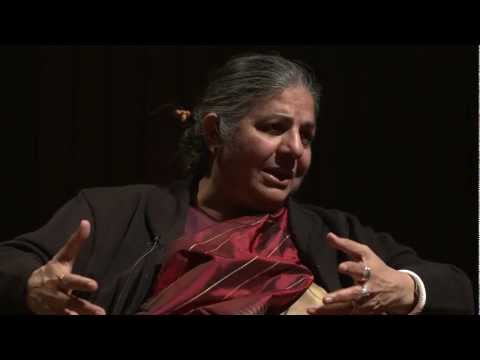What’s Wrong with Our Wheat?
Today’s commercial wheat – a semi-dwarf, high-yield type – is causing many people to be sick. Gluten intolerance or celiac disease has skyrocketed since the 1970s and shows no sign of slowing down. A decade ago, gluten intolerance levels were at 1 in 2,500 worldwide. Today, it’s at 1 in 133! What has happened to the grain that has fed us for thousands of years is inedible for an increasing number of people? So what has happened? Why has bread, and by extension many grains, become bad for our health?
First, let’s look at the differences between historical wheat and today’s modern hybrid. Then we’ll look at how the wheat is made into breads and the differences in how we do that today vs. historically. We need this groundwork to establish how and why wheat is not the same grain it once was.
Bread is the “staff of life”, right? Well, it used to be. In fact, archaeologists have uncovered villages that housed the workers building the great Pyramids and found clay pots used to raise and bake ancient Egyptian sourdough bread. This bread was the majority of the diet, along with meat and milk, of the workers. These weren’t office or light duty jobs; these were brutally heavy jobs – moving huge stones over log rollers up dirt ramparts to place them into the pyramid. Bread, milk and meat kept them going for years.
The grains that were used in baking the ancient sourdough are completely different than what we are eating today. Einkorn, spelt, emmer and dinkel are some of the ancient wheat cultivars that our ancestors ate. They are all “covered-wheat” grains, having thick husks around each kernel. The inedible husk must be removed by pounding or milling and then winnowing before the grains can be ground or eaten. Today’s modern wheat is considered to be a “naked-wheat” cultivar, with a much thinner husk that is easier to remove.
The move toward today’s modern wheat began with hybridizing for smaller or dwarf varieties of wheat. Shorter wheat means more of the plant’s energy is put into seed production, increasing yields. This was very successful, producing huge increases in production. Dwarf cultivars are also more resistant to “lodging” or falling over. Lodging occurs when the stalks are too long for the plant’s roots, the stalk falls over (lodges) and rots. Heavy applications of nitrogen fertilizer, common in commercial agriculture, only make the lodging problem worse. The hybrid dwarf varieties were much less susceptible to lodging, allowing excess nitrogen to be applied without losing too much of the wheat crop.
Happy with the increased production of the hybridized dwarf wheat, plant breeders began more hybridization experiments starting in the early 1960s. Extensive hybridization research, testing and experimentation went on, all with the objective of increasing the yields wheat produced. Repetitive back-crossing and crossing with foreign grass species were just two of several techniques used. What happened was a drastic increase in the production capability of the dwarf super-hybridized wheat. Unfortunately, the issue of digestibility was never examined. Another result of the hybridizations is that gluten levels increased in the new wheat, a good thing for making tall, fluffy breads that are appealing to consumers.
The experimentation didn’t stop there however. In 2003 BASF, the chemical company, introduced Clearfield wheat, which is tolerant to their proprietary herbicide Beyond, much like Roundup Ready Corn is tolerant of glyphosate. They proudly proclaim that the wheat is not the product of genetic engineering, but of “enhanced traditional plant breeding” methods. What, exactly, are these enhanced methods that allows a plant to resist a persistent herbicide?
The technique is called “chemical mutagenesis” and might be worse than GMO engineering. Using a highly toxic chemical – sodium azide – as well as gamma and x-ray radiation, the exposed wheat embryo mutates. After further experimentation, testing and development, Clearfield wheat emerges and is tolerant of the Beyond herbicide. Clearfield is now supplied in 20 varieties and nearly a million acres are planted with it in the US and Canada.
So what we are now eating is a super-hybridized, chemically and radiologically mutated wheat. It’s no wonder we are having issues with digestion and allergic reactions that are becoming more common and more severe. Not all of the wheat that is commercially available is from Clearfield wheat, but more and more is coming onto the market. The rest of the wheat is from the super-hybridized semi-dwarf varieties.
Now that we see the wheat we’ve been eating is different than what has fed us for a long time, let’s look at how bread is made today as compared to the past.
Traditionally bread was made with a slow rise sourdough method, using native yeast from the air to raise the dough. Sourdough is a partnership between specific yeast and bacteria that support each other and make bread rise and develops the unique flavors. In the Egyptian example, leftover dough from the previous batch was added into the current batch of water and whole wheat flour, mixed and kneaded well and set out to rise for a day in terra cotta pots shaped much like flower pots we are familiar with today. The next morning, the pots were put into the oven and baked into the bread which fed the pyramid workers. This pretty much describes how bread has been made for several thousands of years, all over the world.
Today’s bread is made with fast-rising yeast that has been cultured specially to raise bread dough faster and higher than any sourdough can. The wheat is milled to remove the outer layers of wheat bran and wheat germ, leaving only the starchy endosperm or white flour that we are all familiar with. Some of the nutrients that were removed with the bran and germ are added in the “enriching” process, where iron and synthetic B vitamins such as thiamin, riboflavin, niacin and folic acid are added back in. Other agents are added to the dough which keeps the bread fresh and pliable for a longer period of time. The bread dough is mixed and kneaded, then left to rise for an hour or two and baked.
The two major differences in these breads are the flour and the method of rising used. The flour in the sourdough bread is whole wheat, meaning the entire kernel of wheat is milled into flour. The white flour is stripped of most of its nutrients; with a few synthetic vitamins added back in after milling. The rising methods and times differ greatly, with the sourdough having time to break down some of the proteins and amino acids that are indigestible initially. The long ferment and rise of the sourdough, often more than 24 hours, allow the yeast and bacteria to make the resulting bread more nutritious and digestible for us.
So now what? Now that we know the commercial wheat and breads of today aren’t as healthy or nutritious for us as those our parents and grandparents ate, what are our choices? Some people are so affected by wheat that they have to avoid it altogether, while others find they feel better once they are off of it for 30 days or more, and then slowly re-introduce it back into their diets. Most find that avoiding modern wheat and sourcing ancient grains, preparing them in the older, slower methods keeps the digestive systems happy. Learning to make sourdough breads with long fermentation and rise times, along with soaking or sprouting grains will make these foods easier to digest and tastier as well.
One of the directions we have been working on is to provide the home gardener and small scale grower with grains that can be grown at home and prepared without milling equipment. The White Sonora Wheat is the grain we’ve started with, helping to re-introduce this heirloom and almost lost variety of wheat back to the Southwest, and the rest of the country. It has a papery husk that is easily hulled, has lower gluten content than today’s hybrid wheat and is well adapted to harsh climates. You can see other choices for the home grower in our Grains department.
In a story that is very much like the rise of industrial, commercial convenience foods we are seeing that the traditional grains and methods of making our daily bread is much more healthy, nutritious and tasty than the modern methods. To our surprise, many people are seeing that sourcing long fermented sourdoughs are easier to do and baking their own bread is not nearly as hard we we’ve been led to believe.










I’ve been given some seeds of a wheat called “kamut”. Could someone tell me if it’s one of the older, healthier varieties or a modern one?
This is fascinating stuff and a very complex topic. Celiac disease seems to defy the conventional cause-effect paradigm. There was an article in the NYT that I recommend:
http://www.nytimes.com/2013/02/24/opinion/sunday/what-really-causes-celiac-disease.html
Joel Salatin also makes a case that the way wheat is harvested makes a difference – the old way of shocking in the field allowed for a partial fermentation before the grains were even threshed, potentially reducing phytic acid… the more you learn, the more complex this whole picture becomes.
One question, can you point me to a source for the figure of 1:2,500 for gluten intolerance a decade ago? I’m finding research indicating celiac disease is now about 4x more prevalent than it was in the 1950s.
Hi Stephen,
So true, and so few people know about this — and the popular advice of eating whole wheat is only marginally better because our depleted soils, except it can cause worse blood sugar spikes.
Do you know how much wheat to plant for how many bushels, and how much flour that will produce…or how much to plant per person for a season? Your White Sonora wheat matures in 90 days, and is a winter wheat, but can it be planted in the spring and harvested in July or August? I know in the Midwest wheat belt, it is hard winter wheat that is planted in fall and harvested (earlier and earlier over the decades) in June. In other words, does wheat always need a chilling period, or does your White Sonora wheat not since it is a soft wheat variety?
Thanks for all your and your wife’s hard work bringing real food back into style!
Thank you, thank you, thank you for this article! :)
Very interesting!
You are welcome Stephanie! I hope this gets a conversation, more thought and research started. Real food is what we need to get back to, then we should see a massive improvement in our health as a population. Of course, this starts with individuals making their own, informed decisions!
Hope you found it a good starting point, Margaret!
Arddu, it depends on who gave the wheat berries to you and if you can trust them, but in general kamut is one of the older, pre-Green revolution cultivars of wheat. Kamut is the brand name for khorasan wheat, and is marketed by a company working to help re-introduce it. The reason I say if you can trust them is that it is easy to call a seed something when it is an entirely different variety or cultivar.
You are right, Tim, this is a complex subject and we are just trying to break the ice and create some critical thought. The more we learn, it seems to us that some of the older methods were right on track! We’ve seen this time and time again with how traditional agriculture worked with the soil and biology instead of against it. As you point out, soaking and sprouting the grains will greatly reduce the phytic acid and other nutrition inhibiting phytochemicals that are present in the outer shell of any seed or grain.
One of the most thorough, well-researched sources on gluten intolerance/celiac disease that I’ve come across is GreenMedInfo.com. If you sign up (free) you’ll get access to a 183 page pdf book on wheat, complete with research links. This is where I found most of the statistics for the article. Here is a direct link for the pdf of “The Dark Side of Wheat.”
And along the same lines, another NYT op-ed today:
http://www.nytimes.com/2013/05/26/opinion/sunday/breeding-the-nutrition-out-of-our-food.html
It’s funny you mention this article, I just shared this on our Facebook account! Completely agree, we need to first step back and get into some real food all the while realizing that this trend has been going on for a very long time.
Olympia, thank you for the kind words of encouragement! I am working an another article on what space is needed to grow how much wheat for an individual and a family, so stay tuned.
The Sonora White Wheat is best planted as a winter variety, but will do well as a spring crop. It has less gluten than most wheat, so don’t expect to see the same amount of “rise” in your bread as the commercial wheat. It will have much better flavor and nutrition though.
Stephen,
You are on a roll! I am posting this to two FB pages – The Garden Academy and Working on Your Health since it crosses both interest groups.
Angela
Thank you for sharing this Angela, we really appreciate it!
I have been buying Ezikiel bread..is that any better -any advice would be appreciated.
Very informative, interesting article for people wanting to feed their families non GMO foods.
I’m not familiar with Ezikiel bread, Barbara. Do some research on what type of wheat they use, look at their website or call them to ask questions. If they are using an ancient wheat, they will most likely talk about it and the benefits and challenges of baking with it.
Thanks Cheri, we hope that this helps to open some eyes that any industrial food should be carefully examined and that assumptions can hurt us!
Over 20 years ago I purchased, in bulk, hard red winter wheat & baked my own bread. Do you know of any source of this wheat today?
Janice, I don’t have a specific supplier in mind, but would ask for heirloom and certified organic wheat. Bob’s Red Mill has a section with whole grains in it, so might be a start. Check at your local farmer’s market as well for a grower that is local to you.
I don’t suppose you happen to know how long it takes from planting and harvesting for spelt? The internet is being very unhelpful in that regard, and I’ve been debating adding some to the garden. I know I’m doing more corn next year – one of 4 heirlooms – but since I like to bake my own bread, I’m looking into wheat possibilities as well.
Jana, I don’t know specifically the maturity for spelt, but our White Sonora Wheat is about 90 days, and the Faro Quinoa is 90-120 days which seems to be the range for most of the heritage, non-hybridized grains. The White Sonora is a softer wheat that has less gluten than other heritage wheat varieties, and much less than modern wheat. We’ve really enjoyed cooking and baking with it!
Some thoughts and comments from a different perspective. I was raised on a farm in Illinois, farmed for may years and still actively engaged. There is no question wheat has changed over the years-shorter stems, higher yields earlier maturing. Hard red winter wheat primarily used for bread is grown in the states west of Missouri with hard red Spring wheat in North Dakota, Montana and Western Canada, Missouri and East is soft red winter wheat used primarily for cakes, cookies pastries etc. Soft wheat is normally 10-12% protein, hard wheat is 14-16%.
In the soft wheat area the lesser straw and earlier maturing wheat is highly desirable because soybeans are planted in the wheat stubble-“double cropping”. The two or three week earlier harvest is huge to the success of the soybeans.
The real bottom line for commercial wheat growing is that growers are paid for yield and to a lesser extent on density and moisture level. Gluten content is not a factor and I do not think this is going to change.
I remember the wheat binding and building the shocks in the field 65-70 years ago. I doubt fermentation in the shock was much of a factoe and if people want to give this a try I wish them luck. It was not much fun.
A couple of other comments-spelt is not a sub species of wheat. it is the same Genus-Triticum but a different species-spelta vs aestivium for wheat. Planting time etc for spelt is the same as winter wheat-plant in early October harvest in June.
I question the depleted soils comment-what is depleted.
And last but not least the tremendous increase in gluten intolerance. How much of this is that it is being diagnosed more tha it once was?. How many people had this checked out 50 years ago? A similar thing is autism. Thirty years ago most people never heard of it now one in approx. 90 boys are diagnosed with some form or level of autism.
As always, thanks for your thoughts and comments Larry, I appreciate that you bring your experiences as a farmer to the discussion. I’m glad that you pointed out that the farmer is paid for production and not gluten content, as this seems to be a cause for confusion with consumers that are starting to learn about their food, where it comes from and who grows it.
Agricultural soil that is not replenished with minerals and trace elements can become depleted over time, as plants take up and remove them from the soil. This is the same for the farm as well as the garden and explains why productivity and quality gains are seen in both when adding Azomite or SEA90 to the soil to help replenish the minerals and trace elements needed by the plants.
I agree with the gluten intolerance comment, as today’s diagnosis is more thorough and has more research and study behind it than 20 – 30 years ago or more. That being said, it also seems to be a “fashionable” diagnosis, if you will, with a number of doctors and nutritionists proscribing wheat immediately and not really digging more into the symptoms and causes, such as the quality of diet. The affected person avoids all wheat and gets better, but may not realize that eliminating the preservative laden white bread may have relieved much of the problem, and switching to more of a real, non-processed or preserved food could be the true answer instead of just avoidance of everything wheat. Somehow, many of us still don’t understand that the quality of our diets has a direct effect on the quality of our health!
Hi Stephen,
Thank you for your interesting article. In reading the comments, I see that you recommended going to GreenMedInfo.com and upon signing up we will get acess to a 183 pg book on wheat complete with research citings/links. Hadn’t heard of the site prior so very glad to have discovered it. However, it does not appear that they give this pdf away any longer or I am looking in the wrong place. Wondering if you can please tell me the title of this book as I am very interested in reading it.
Thank you,
Mindy
Mindy, thanks for bringing this to my attention! I’ve included the direct link on my original comment, but here it is as well – “The Dark Side of Wheat” pdf.
I asked Food for Life what type of wheat was used in Ezekiel bread. Hard red spring wheat is the type used. I haven’t been able to find out if this is a “healthier” wheat or not.
You are getting closer, Erica! Hard red spring wheat is a general term – now you need to find out if it is an heirloom wheat or not – meaning is it an older, non-hybridized form that doesn’t have the higher gluten content of today’s hybrids?
So, this is why I can’t eat wheat. I don’t have celiac, so I’m not allergen to gluten, but I have a non-celiac intolerance to wheat. I recently got tested and all that came back for allergies was grasses (and cockroaches and dust mites). So, in the ’60s, when they hybridized wheat with grass, they made it so anyone with a grass allergy cannot now eat wheat without a reaction. Very interesting and incredibly helpful. This explains so much for me. I greatly appreciate this!
That might be the root cause Gregory! Many people learn that they feel much better when switching to heirloom grains that haven’t been hybridized.
Hey Mr. Scott im a college student and I am using your article in a research paper on wheat. It was very helpful and I hope someone important reads it and promotes healthier alternatives. Thanks for writing it.
Thank you Dakota! I hope your paper is well read, thanks for researching better food.
I have spent many hours trying to research the wheat issue. But I didn’t start with wheat, I started with yeast exploration. I found that our yeasts, to get them to multiply faster, are treated with a GMO substance. But the yeast itself is not GMO. I suspect this other substance does remain on the yeast itself when it goes to market. I wish I had a reference for you, but I read this a few days ago, and didn’t copy the link. Finding out about wheat, however, certainly explained some things about why America and Mexico are struggling with the obesity issue like never before in history. Mexico just surpassed the U.S. in obesity rates. Mexico has been using wheat in tortillas instead of corn, and guess from where they are getting their wheat? The U.S. They are the largest importer of U.S. wheat. There is an excellent book called “Wheat Belly.” I gave it to my son for Christmas, and made him promise to let me read it when he’s done. I took myself off wheat and yeast entirely. I have felt better, and my appetite is much more under control. I was a big bread eater, and I was gaining weight like crazy over the past five years. America needs to wake up to their wheat/sugar addictions, or we are doomed to health problems. Thank you for this blog, and for the efforts you put into spreading information about our food supply.
Thanks for sharing your learning and experiences Lynn. We all are somewhere along the path of our journey, some just starting while others are further along; but everyone can share and learn from others.
I am the daughter of a wheat farmer and have worked on the farm helping my family a lot. There are a couple of points I’d like to make:
1. You call it “hybridized wheat.” But there is no such thing. In order to have a hybrid, you must have a male plant and a female plant, the “cross” of which is called a hybrid, and, that hybrid cannot reproduce. (Horse + Donkey = Mule). I make this point because hybridization does not equal cross-breeding, which *can* and does occur in nature. Calling a wheat a “hybrid” when it isn’t, is very misleading, and frankly, wrong.
2. Many of the varieties of wheat that are created use no radiation to make them. (Actually, I don’t know that any use radiation to make them, but I’ll talk to my peeps in wheat breeding at K-State.) Varieties that produce well and are naturally resistant to insects or diseases — are crossed to see if a better variety can come about. The reason this is done is because many of the heirloom varieties of wheat cannot resist the new fungi or insects which are always evolving. A good example is in 2012 when the leaf rust fungus evolved to destroy much of the nation’s wheat crop. New varieties of food plants have to be bred in order to keep up with Mother Nature.
3. Speaking of Mother Nature, farmers are incorporating new methods of farming to more emulate what Mother Nature does in the wild: more and more farmers are using a mix of cover crops between cash crops (like wheat) to enrich the soil. Many farmers have found it is cheaper to raise a cover crop to enrich the soil instead of using fertilizers or herbicides to knock out pesticide resistant weeds. My Dad has found that a cover crop of oats will out compete the Palmer Amaranth and, if he needs to use herbicide, he can use much less and only on the edges of the fields. He uses radishes to naturally kill out many other weeds.
Let me be clear: farmers don’t like to use herbicides. It’s expensive to do so, and frankly, a pain in the butt to apply.
4. There are very few Clearfield wheat varieties (compared to how many there are) and many farmers don’t like to use them unless they absolutely have to in order to break a cycle. Clearfield wheats are expensive, after all, and there is a lot of red tape that goes with growing them. One way Clearfield wheats are used is to get rid of Wild rye. Wild Rye is REALLY difficult to get rid of in a field and can cross breed with wheat. Using a clearfield wheat for a year can remove a rye problem that would take a decade to get rid of using cultivation methods. Cultivating the soil rips out the soil structure that takes years to develop and you lose precious soil moisture in the process.
While I welcome discussion, I get very frustrated when people who have never farmed in their lives put out information that is misleading or one-sided. I feel as though you have done that in this case. Please try to get “both sides” of the discussion before you preach. :)